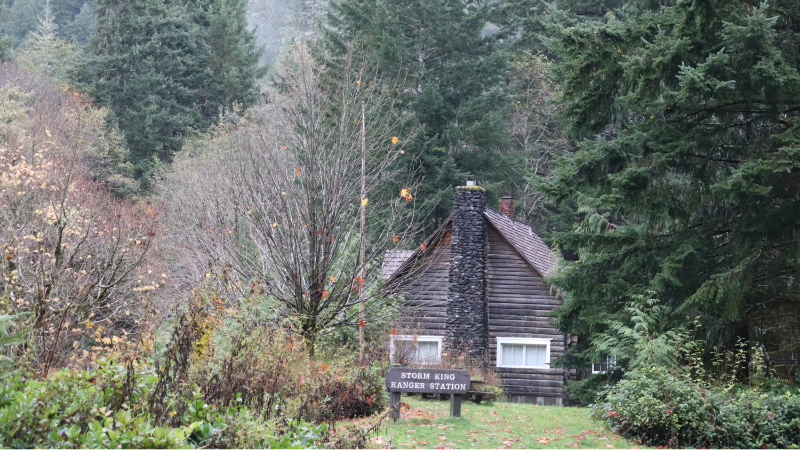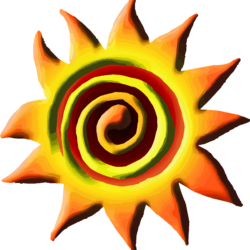
Table of Contents
Here in the Northern Hemisphere, the Summer Solstice came and went over a month ago. When the days grow shorter and the sunlight fades, many people find their mood shifting in subtle or severe ways. This annual pattern of low energy, irritability, sleep disturbance, and sadness is known as Seasonal Affective Disorder (SAD). A type of depression that typically occurs in the fall and winter months, SAD is believed to be triggered by a reduction in sunlight, which disrupts biological rhythms and mood-regulating chemicals in the brain.
While light therapy and medication are common treatments for Seasonal Affective Disorder (SAD), one promising, holistic approach that is gaining attention is Mindfulness-Based Ecotherapy (MBE). By combining the healing properties of sunlight, nature, and mindfulness, MBE offers an accessible and empowering way to manage and reduce seasonal depression.
What Is Seasonal Affective Disorder?
Seasonal Affective Disorder (SAD) is a type of recurrent depressive disorder linked to seasonal changes. It typically begins in the late fall and continues through winter, lifting in spring or summer. Symptoms of Seasonal Affective Disorder (SAD) include:
- Persistent low mood
- Loss of interest in previously enjoyed activities
- Increased need for sleep or disrupted sleep
- Carb cravings and weight gain
- Feelings of hopelessness or sluggishness
According to the National Institute of Mental Health (2022), SAD affects about 5% of adults in the United States, with women and people living in northern latitudes at higher risk.
The Role of Sunlight in Mood Regulation
Sunlight plays a critical role in maintaining healthy circadian rhythms and regulating the production of melatonin and serotonin—hormones involved in sleep and mood. A decrease in sunlight during the colder months can disrupt this delicate balance, leading to symptoms of depression.
- Melatonin: Produced in darkness, this hormone helps regulate sleep. Too much melatonin during the day can cause fatigue and sluggishness.
- Serotonin: A neurotransmitter linked to feelings of well-being and happiness. Less sunlight can mean lower serotonin levels, which is a key factor in Seasonal Affective Disorder (Lam & Levitan, 2000).
Exposure to natural sunlight, even on overcast days, can help restore this balance and lift mood. This is where Mindfulness-Based Ecotherapy comes in.
What Is Mindfulness-Based Ecotherapy?
Mindfulness-Based Ecotherapy (MBE) is a therapeutic approach that integrates mindfulness practices with nature immersion. It emphasizes present-moment awareness, acceptance, and intentional engagement with the natural world.
Unlike traditional therapy conducted indoors, MBE sessions often take place outside—in forests, parks, gardens, or other green spaces—using the environment as a co-facilitator of healing. This makes it particularly effective for conditions like Seasonal Affective Disorder (SAD) that are influenced by environmental factors.
How MBE Can Help with SAD
1. Encourages Regular Sunlight Exposure
One of the simplest and most effective ways to reduce Seasonal Affective Disorder (SAD) symptoms is through regular exposure to daylight. MBE encourages individuals to spend intentional time outdoors—even in winter—whether through guided nature walks, mindful breathing, or eco-art therapy.
Even 20–30 minutes of natural light exposure can increase serotonin production and improve mood (Rosenthal et al., 1993). Practicing mindfulness during that time maximizes the benefit by reducing stress and increasing awareness of emotional states.
2. Regulates Circadian Rhythms
Practicing MBE in the morning can help reset the body’s internal clock, leading to better sleep and improved energy levels. Morning light exposure is particularly effective in syncing circadian rhythms that may become disrupted during the winter months (Lewy et al., 2006).
A simple morning walk in natural light while practicing breath awareness or mindful observation of your surroundings can be both grounding and energizing.
3. Reduces Rumination and Negative Thought Patterns
Mindfulness teaches people to observe thoughts without getting caught in them. For those with SAD, this can be crucial, as negative thinking tends to increase in winter months. Nature provides a nonjudgmental space for mindfulness practice, reducing mental fatigue and promoting emotional clarity (Kaplan, 1995).
Research has shown that mindful time in nature significantly reduces rumination, a key predictor of depression (Bratman et al., 2015).
4. Boosts Vitamin D Levels Naturally
Sunlight is a primary source of vitamin D, a nutrient essential for mood regulation. Low vitamin D levels are associated with a higher risk of depression, including SAD (Anglin et al., 2013). Spending time outdoors—even during colder months—can support healthy vitamin D production, particularly when combined with mindful movement like walking, stretching, or tai chi in nature.
5. Creates a Sense of Connection
Seasonal Affective Disorder (SAD) often comes with feelings of isolation and disconnection. MBE fosters a sense of interconnectedness with the natural world, which can be deeply healing. Practices like sitting with a tree, journaling outdoors, or creating a seasonal nature altar provide a meaningful sense of belonging and support emotional wellbeing.
Simple Outdoor Mindfulness Practices for SAD
Here are a few accessible MBE-based practices to incorporate into your winter wellness routine:
The Sunlight Pause
- Each morning, go outside and stand in direct sunlight for five minutes.
- Close your eyes and feel the light on your skin.
- Inhale deeply and exhale slowly, anchoring your awareness in the breath.
- Set a gentle intention for the day ahead.
Winter Sensory Walk
- Take a slow walk in a natural area near your home.
- Focus on using all five senses: sight, sound, touch, smell, and even taste (if safe).
- Notice how winter changes the landscape and how your body responds.
Nature Gratitude Practice
- Sit outside with a journal.
- Write down five things you notice and appreciate about nature in this season.
- Reflect on how those elements support your emotional well-being.
Final Thoughts
Seasonal Affective Disorder (SAD) is a real and challenging condition, but you are not powerless against it. By mindfully reconnecting with nature through Mindfulness-Based Ecotherapy, you can harness the healing power of sunlight, earth, and presence to shift your emotional state and build lasting resilience.
Even in the darkest months, nature has a quiet wisdom to offer. Step outside, breathe in the light, and let nature help you find your way back to balance.
References
Anglin, R. E., Samaan, Z., Walter, S. D., & McDonald, S. D. (2013). Vitamin D deficiency and depression in adults: Systematic review and meta-analysis. British Journal of Psychiatry, 202(2), 100–107. https://doi.org/10.1192/bjp.bp.111.106666
Bratman, G. N., Hamilton, J. P., Hahn, K. S., Daily, G. C., & Gross, J. J. (2015). Nature experience reduces rumination and subgenual prefrontal cortex activation. Proceedings of the National Academy of Sciences, 112(28), 8567–8572. https://doi.org/10.1073/pnas.1510459112
Kaplan, S. (1995). The restorative benefits of nature: Toward an integrative framework. Journal of Environmental Psychology, 15(3), 169–182. https://doi.org/10.1016/0272-4944(95)90001-2
Lam, R. W., & Levitan, R. D. (2000). Pathophysiology of seasonal affective disorder: A review. Journal of Psychiatry & Neuroscience, 25(5), 469–480. https://www.ncbi.nlm.nih.gov/pmc/articles/PMC1408055/
Lewy, A. J., Lefler, B. J., Emens, J. S., & Bauer, V. K. (2006). The circadian basis of winter depression. Proceedings of the National Academy of Sciences, 103(19), 7414–7419. https://doi.org/10.1073/pnas.0602425103
National Institute of Mental Health. (2022). Seasonal Affective Disorder. https://www.nimh.nih.gov/health/publications/seasonal-affective-disorder
Rosenthal, N. E., Sack, D. A., Gillin, J. C., Lewy, A. J., Goodwin, F. K., Davenport, Y., … & Wehr, T. A. (1993). Seasonal affective disorder: A description of the syndrome and preliminary findings with light therapy. Archives of General Psychiatry, 41(1), 72–80. https://doi.org/10.1001/archpsyc.1984.01790120076010
Share Your Thoughts!
What do you think? Share your thoughts in the comments below! And don’t forget to subscribe to our newsletter!

